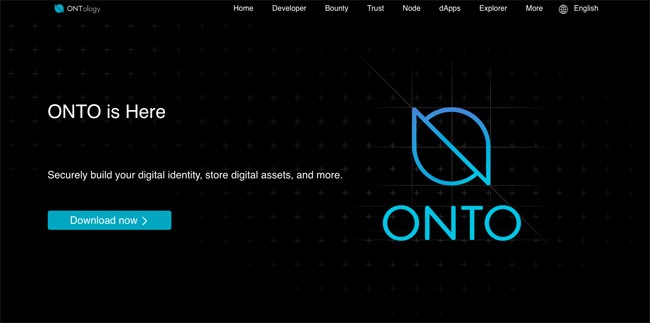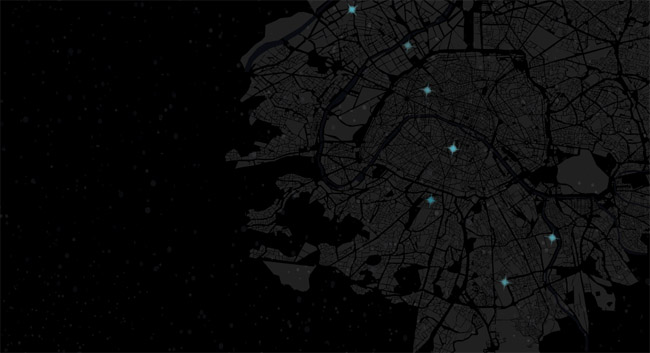Ontology was created as a secure blockchain project to support corporate needs, providing a way to protect their systems and their data. Ontology is a Blockchain-as-a-Service (BaaS), bringing the blockchain to corporations in a way that they can benefit from the distributed and decentralized nature of the blockchain ledger.
It is similar to NEO and will have a dual token system where ONT is equivalent to NEO and ONG is equivalent to GAS, providing power for the network.
Ontology Review: Introduction

The company behind Ontology is called Onchain, and it is a Chinese technology company that has been involved in building blockchains and distributed network architecture for business usage since 2014. The co-founders of Onchain are Da HongFei, who is the CEO of the project, and Erik Zhang, who is the CTO of the project.
The two were also the creators of Antshares back in April 2016, which later became NEO. They spent nearly 2 years in the creation of the Antshares blockchain. In November 2017 Ontology was launched by Onchain.
While both NEO and Ontology were created by the same pair of individuals, there are distinct differences between the two networks. It’s also important to note that they are separate projects. NEO doesn’t own Ontology, and even Onchain is a separate company from the Ontology Network.
Ontology is unique because it isn’t really a single blockchain, but is rather a network of blockchains. It was designed to easily migrate proprietary enterprise platforms to a blockchain distributed ledger with no disturbance or compromise of the systems.
You can think of it as a private space within the world of public blockchain and it gives enterprises all the technology associated with the blockchain and no compromises on security.
When it comes to similarities between Ontology and NEO there are several. Both are meant to be competitors to Ethereum, and both are designed as smart contract platforms capable of hosting decentralized applications.
Oncology is meant to address a major problem with Ethereum in terms of enterprise usage. You see, Ethereum is open source, which is great for decentralization, but bad for companies who are hesitant to trust an open source solution with their proprietary data.
Besides fixing the problem businesses have with Ethereum, Ontology is also designed as a bridge between NEO and existing legacy systems. It is also unconcerned with its currency becoming consumer-facing like Bitcoin and most other cryptocurrencies. It’s only concerned with being able to serve enterprise users and that makes it very different from most other blockchain projects.
Surprisingly, it’s expected that this lack of concern with the consumer and with trading exchanges could help support the price of the Ontology token, but we’ll get more into that later when we look at the ONT and ONG cryptocurrenies, their value and their reception from cryptocurrency markets.
Ontology Review: Use Case Scenario

So far everything I’ve discussed is theoretical, so I think it would be helpful to illustrate how Ontology is both useful and needed by businesses. For this, we need to understand how enterprise business systems work in the real world. This can be done using the mortgage industry as an example and will demonstrate how the combination of NEO and Ontology is serious competition for Ethereum.
So, we already know that Oncology is actually a network of blockchains rather than a single blockchain. This allows it to operate in a fashion similar to cloud storage, which is utilized by many organizations and even government agencies. When cloud storage is used, data can be restricted so that only approved users are able to access certain folders file directories and databases.
This is very much how current enterprise systems work.
Using the mortgage industry as an example it’s important to note that many loan servicing functions are outsourced rather than being done by the lender (i.e. Freddie Mac or Fannie Mae) or even the loan service company (i.e. Bank of America). Nearly all the servicing is done by third-party outsourced vendors.
That works well and is efficient, but as you might imagine, an organization like Bank of America isn’t going to give outside vendors complete access to their systems. That would be a huge breach of security. Besides, there’s no reason for vendors to have complete access to the Bank of America systems.
So, Bank of America stores and accesses data via a series of proprietary software platforms.
Internal Bank of American employees who are tracking loan or insurance data can access that data through the custom-built proprietary platform from Fidelity National Information Services. Third-party agents can also access this data in a limited fashion through a web portal designed to allow access for external agents. Even tighter access is granted through another, different web portal.
All of the systems are synched and updated daily (or even hourly or in real-time). This is done by a series of queries to the centralized Bank of America database. Even within Bank of America very few people would have full access to the system to maintain checks and balances.
Migrating this entire infrastructure is extremely impractical to the point of being impossible. Banks, insurance companies, hospitals, governments and other organizations wish to keep their data private for various reasons from consumer protection to regulatory compliance to trade secrets. It’s unethical and even illegal if they allowed anyone access to customer data.
So, even though blockchains like Ethereum and NEO were made to support enterprise usage, most businesses are hesitant to use them because they would no longer have control of their data. And this is where Ontology becomes useful.
Ontology is like the proprietary custom-built platform that Bank of America uses for its lending operations. It will give control over data and access back to the enterprise. It keeps the data separate from anyone else’s and the enterprise can decide which data can be shared with the NEO ledger, which then becomes the public access portal.
In addition, the enterprise could still run their own queries and reports on the data to slice it and dice it any way they want for outside access. By keeping their Ontology blockchain separate from everyone else, proprietary data remains tightly controlled.
Having worked on enterprise distributed ledger solutions for more than 4 years, the leadership at Ontology fully understands the hurdles of acceptance faced by blockchain solutions looking to serve enterprise clients. Ontology was developed to specifically address the concerns of enterprises and build a system they would feel comfortable using.
The ONT and ONG Tokens
As of October 26, 2018 Ontology ONT has a total market cap just shy of $360 million and is the 27th largest coin by market cap. The total supply is fixed at 1 billion ONT tokens.
Only 12 percent of the ONT supply is distributed to the Ontology community, while 28 percent is owned by institutional partners, 10 percent is held by the NEO Council, 35 percent is held by Ontology (with 25 percent set aside for development and 10 percent for technical community reward), and the remaining 15 percent was distributed to the Ontology core team.
Ontology did not conduct a traditional ICO, but instead had a series of airdrops to holders of NEO in February 2018. In addition to airdrops to NEO holders, there were also coins airdropped to Ontology’s newsletter subscribers (1,000 ONT) and to NEO DevCon attendees (500 ONT). More airdrops are planned for the future.
The ONT airdrops are supported by many of the exchanges that offer ONT trading. Binance, OKEx, Livecoin, Allcoin, KuCoin, Bitfinex and Huobi all support ONT airdrops. If you want to purchase ONT tokens the largest exchange is Bibox, although Binance and DigiFinex both have good trading volume as well.
Ontology ONT Token Update
On June 30, 2018 the Ontology Mainnet was launched and the existing ONT tokens, which were NEP-5 tokens on the NEO blockchain, were swapped out for the new native ONT tokens.
After the mainnet launched it became a dual-token blockchain, with ONT as the tradable public token, and ONG acting just like GAS does for NEO, powering the blockchain. ONT holders are now able to receive ONG for participating in network decisions.
Like NEO, ONT is not divisible, but ONG is divisible by multiple decimals to facilitate use in powering transactions on the network. ONG will be generated over a period of 22 years, with 16 percent generated in year one, 52 percent generated by year four, and 80 percent generated by year 12. Spent ONG is redistributed to ONT hodlers.
When it comes to the ONG token you need to understand it is not the same as the onG.social ONG coin found on some exchanges and on Coinmarketcap. That coin is from OneName Global, a social media dashboard running on the Ethereum and WAVES blockchains. The Ontology ONG token is only used internally to power the Ontology blockchain.
Ontology Review: Conclusion
Ontology is aiming to increase trust in the world, making it quicker and easier to place trust in various entities and organizations. This will do away with a lot of the energy that is currently expended to grow trust.
In addition, it will work in tandem with NEO, bridging the gap between blockchain technology and the real world. The two do have similar gaols, but NEO is focused on smart contracts and digital assets, while Ontology places its focus on trust, data exchange, authorization and identity. They are mutually beneficial and work better together, providing a perfect combination.
The project is expected to succeed given the experience and success of the current management and development teams. Plus Ontology can rapidly expand because unlike other projects targeting the financial industry only, Ontology is targeting a large cross-section of industries. In fact, given the long-term vision and a strong presence in the blockchain industry, it wouldn’t be surprising to see the NEO/Ontology combination rise to the very top of the blockchain ecosystem and revolutionize the business world.